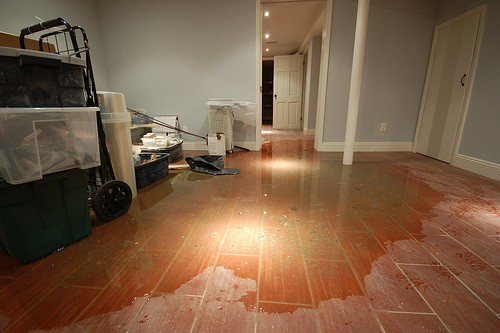
Water damage can wreak havoc on your home, causing costly repairs and potential health hazards. By regularly inspecting your home for signs of water damage, you can catch issues early and prevent further damage. In this guide, we will walk you through the steps to effectively inspect your home for water damage and protect it from future issues.
Importance of Water Damage Inspection
Water damage can occur in various ways, including leaks, floods, or excess moisture. It is crucial to inspect your home for water damage regularly to:
- Prevent structural damage
- Avoid mold growth
- Protect your belongings
- Ensure the safety of your family
Areas to Inspect for Water Damage
1. Roof
Your roof is the first line of defense against water intrusion. Inspect your roof for signs of damage, such as missing shingles, cracks, or leaks.
2. Attic
The attic is a common area for water damage due to roof leaks or poor ventilation. Check for signs of water stains, mold, or musty odors.
3. Walls and Ceilings
Inspect the walls and ceilings for water stains, peeling paint, or bulging areas, which could indicate water damage behind the surface.
4. Windows and Doors
Check windows and doors for signs of water intrusion, such as water stains, rotting wood, or difficulty opening and closing.
5. Basement and Foundation
Water damage in the basement or foundation can lead to structural issues. Look for cracks, dampness, or efflorescence on walls.
Signs of Water Damage
Recognizing the signs of water damage early can help you address issues promptly. Look out for the following signs:
- Water stains on walls or ceilings
- Musty odors
- Peeling or bubbling paint
- Warped or sagging floors
- Mold or mildew growth
DIY Water Damage Inspection
While professional inspection is recommended for thorough assessment, you can conduct a DIY water damage inspection by following these steps:
1. Visual Inspection
- Check for signs of water stains, discoloration, or peeling paint on walls and ceilings.
- Inspect plumbing fixtures, appliances, and HVAC systems for leaks.
- Look for pooling water around the foundation, basement, or crawl space.
2. Moisture Detection
- Use a moisture meter to detect high levels of moisture in walls, floors, or ceilings.
- Inspect for condensation on windows or pipes, which could indicate high humidity levels.
3. Odor Inspection
- Sniff for musty or damp odors, which are common indicators of mold or mildew growth.
- Check for sewage odors, which could signal a plumbing issue.
Professional Water Damage Inspection
If you suspect water damage or want a thorough evaluation of your home, consider hiring a professional water damage inspection service. A professional inspector can:
- Use specialized equipment, such as thermal imaging cameras and moisture meters, to detect hidden water damage.
- Provide a detailed report of findings and recommendations for repairs.
- Help you address water damage issues promptly and effectively.
Preventing Water Damage
While regular inspection is essential, taking preventative measures can help protect your home from water damage. Consider the following tips:
- Ensure proper drainage around your home to prevent water from pooling near the foundation.
- Inspect and maintain your roof regularly to prevent leaks.
- Seal gaps and cracks in walls, windows, and doors to prevent water intrusion.
- Install a sump pump in the basement to prevent flooding.
- Keep gutters and downspouts clean to allow proper water flow away from your home.
Conclusion
Water damage inspection is crucial for protecting your home from costly repairs and health hazards. By regularly inspecting your home for signs of water damage, you can catch issues early and prevent further damage. Whether you conduct a DIY inspection or hire a professional service, staying proactive can help you maintain a safe and healthy home environment.